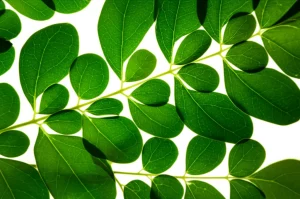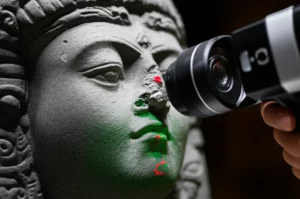Unlocking Seaweed’s Secrets: Why the Wet Way Might Be the Best Way!
Hey there, fellow curious minds!
So, I’ve been diving into some pretty cool stuff lately, and it involves something you might see washing up on the beach, but with way more potential than just being… well, beach stuff. I’m talking about seaweed, specifically a lovely red one called Gracilaria gracilis. Now, this isn’t just any old seaweed; it’s already known for making agar, which is used in all sorts of things, and it’s even eaten in some parts of the world. But here’s the exciting part: it’s packed with potentially amazing compounds – things like antioxidants and anti-inflammatories.
Getting these valuable goodies out of the seaweed is the tricky bit, though. Traditionally, folks dry the seaweed first, which makes it easier to handle and store. But drying takes a ton of energy, and honestly, it might even mess with some of the delicate compounds we’re trying to get at. That’s where the idea of the “wet route” comes in. Picture this: instead of drying, you process the seaweed while it’s still wet. Sounds simpler, right? And potentially way more sustainable and maybe even better at getting those good compounds out.
The Case of Gracilaria gracilis
This particular study I looked at used Gracilaria gracilis as a perfect example to test this wet route idea. Why? Because it’s already cultivated (often in cool systems called Integrated Multi-Trophic Aquaculture, or IMTA, which is super environmentally friendly as it cleans up fish farm water!), it’s edible, and we know it’s loaded with bioactive compounds like fatty acids, polyphenols, and vitamins. These compounds are like tiny superheroes, showing promise for all sorts of health benefits – think antioxidant, anti-inflammatory, maybe even anti-cancer stuff. But, as I mentioned, getting them out effectively and consistently is the challenge.
The researchers wanted to see if the wet route could beat the old-school dry route and, if so, which wet techniques worked best. They compared the conventional dry method (drying, then extracting) with several wet methods. They tried different ways of mixing and prodding the wet seaweed with various liquids:
- Overnight Agitation (OA): Basically, soaking and shaking it gently for a long time.
- Intense Homogenization (H): Blasting it with a high-speed mixer to really break things up.
- pH-Shift (pHS): Using an acidic solution first, then neutralizing it.
- Ionic Liquid (IL): Using a special type of solvent called an ionic liquid (though they had limited amounts of this fancy stuff).
- Ultrasound-Assisted Extraction (UA): Using sound waves (ultrasound) to help coax the compounds out.
They also played around with how much liquid they used compared to the seaweed. The goal was to figure out which combo gave the best results in terms of how much stuff they could extract (the yield) and how many valuable polyphenols were in the extract. Then, they took the best performers and tested their antioxidant and anti-inflammatory powers.

Yields and Polyphenols: The First Clues
Okay, so what did they find? When they looked at how much total dry matter they extracted, the dry route was… well, not great. It consistently gave low yields. Some of the wet methods weren’t fantastic either, like using certain solvents with intense homogenization or the ionic liquid method. But the wet route combined with overnight agitation (WOA), pH-shift (WpHS), and ultrasound (WUA) really shone, hitting yields over 40% of the seaweed’s dry weight. The very best yields were pretty much neck-and-neck between WOA with ethanol/water, WpHS, and WUA with ethanol/water, all using a 1:10 seaweed-to-liquid ratio.
Mineral matter yield was a bit different, but again, the dry route and some wet methods (like pH-shift) didn’t do so hot. Wet methods using water or ethanol/water with overnight agitation, homogenization, or ultrasound generally gave better mineral yields.
Now, onto the polyphenols – those antioxidant powerhouses! The pH-shift and ionic liquid methods were surprisingly poor at extracting polyphenols. The dry route did okay, but here’s where the wet route really flexed its muscles. Applying overnight agitation to *wet* seaweed, especially with water at a 1:10 ratio, resulted in a massive jump in polyphenol content compared to the dry route version – we’re talking an increase from around 46 mg to almost 288 mg per 100g of dry seaweed! Ultrasound-assisted extraction of wet biomass with ethanol/water was also super effective, yielding up to 309 mg per 100g. So, generally, the wet route, particularly OA and UA, was much better at pulling out these valuable compounds than the dry route.
Antioxidant and Anti-inflammatory Punch
The researchers then picked the top performers – the dry route reference (DOAew1:20) and two promising wet route extracts (WOAew1:10 and WUAew1:10) – to see how biologically active they were. They used three different tests for antioxidant activity (DPPH, FRAP, and ABTS). The DPPH and FRAP tests showed the wet route extracts were about as good as the dry route extract.
But the ABTS test told a different story! This test is sometimes more sensitive and picks up different types of antioxidants. Here, the wet route extracts showed a clear advantage, with significantly higher antioxidant activity compared to the dry route extract. This suggests the wet route, especially with ultrasound, might be better at extracting certain types of antioxidants or perhaps other beneficial compounds not measured by the polyphenol test alone.
And for the grand finale: anti-inflammatory activity! This was measured by how well the extracts inhibited an enzyme called COX-2, which is involved in inflammation. The results were pretty striking. The dry route extract showed only a small amount of inhibition (around 6.8%). But the wet route extracts? Wow! They achieved much higher inhibition, ranging from 26.2% to a whopping 38.3% with the ultrasound-assisted wet extract (WUAew1:10). That’s a massive difference and a clear win for the wet route, especially when combined with ultrasound.

Why Does the Wet Route Work Better?
So, why is the wet route, particularly with overnight agitation and ultrasound, so effective for Gracilaria gracilis? The text suggests a few reasons. Avoiding the drying step saves energy, yes, but it might also prevent polyphenols from getting damaged by heat or binding to other stuff in the seaweed. Plus, working with wet biomass might make it easier to break open the seaweed cells and let the good compounds out. Think of the cell wall as a tough barrier; being wet might make it more pliable or susceptible to disruption.
Techniques like ultrasound are thought to help by creating tiny bubbles that pop (cavitation), which can break cells open or make their membranes more permeable (sonoporation). It can also help the solvent get into the seaweed structure (sonocapillary). The relatively gentle ultrasound conditions used in this study seemed to promote these helpful effects without overly fragmenting the seaweed, which can sometimes lead to compounds getting stuck (adsorbed) onto the smaller particles.
There’s also the idea of osmotic shock. When you put wet seaweed (which has a lot of water inside) into an extraction liquid, especially one that’s not pure water (like ethanol/water), the difference in concentration can cause water to rush out of the cells, potentially helping to break them open. This effect is stronger with wet biomass because the ratio of dry matter to solvent is effectively higher in the wet route compared to the dry route where the biomass is already dry.
Comparing these results to other studies on different seaweeds shows that effectiveness varies a lot depending on the seaweed species and the exact method used. Some seaweeds give high yields with hot water or enzymes, while others, like Gracilaria, seem to respond really well to wet methods like OA and UA. The pH-shift and ionic liquid methods, while promising for other things (like protein extraction), didn’t seem to be the best fit for getting total organic matter or polyphenols out of this type of seaweed.
Looking Ahead: The Industrial Dream
What this study really highlights is that even a well-known seaweed like Gracilaria gracilis still has hidden potential, and how we extract things makes a huge difference. The wet route, especially with ultrasound, offers a powerful combination: it’s effective, giving high yields and potent extracts, and it’s more sustainable by skipping that energy-hungry drying step. This makes it economically attractive too.
Conventional extraction methods can be slow and use lots of potentially harmful solvents. Emerging technologies like ultrasound are faster, more efficient, and often considered greener. While ultrasound extraction has been around for a while, applying it on a large industrial scale for seaweed is still relatively new and needs more research to optimize. But the results here, showing superior antioxidant (ABTS) and anti-inflammatory (COX-2) activity compared to the traditional dry method, make a strong case for pursuing this wet route, ultrasound-assisted approach further.

Ultimately, this research paves the way for scaling up these promising wet route techniques. Imagine getting more valuable compounds, more sustainably, from seaweed that’s already being cultivated in an eco-friendly way. That’s a win-win in my book!
Source: Springer







